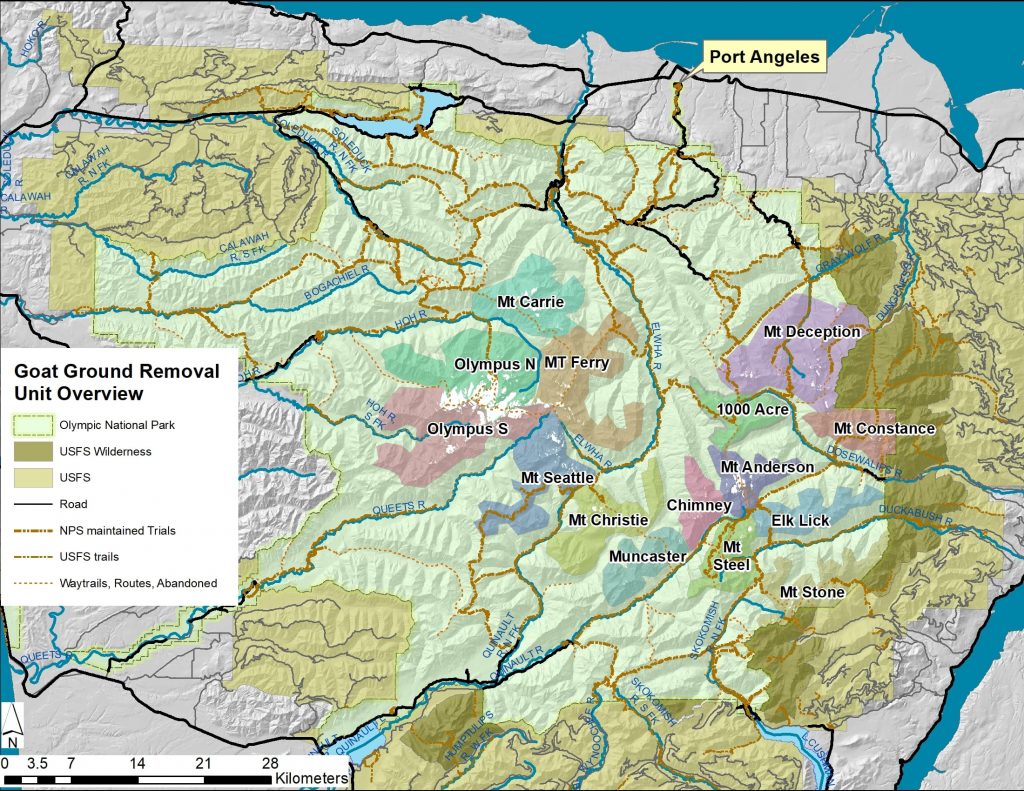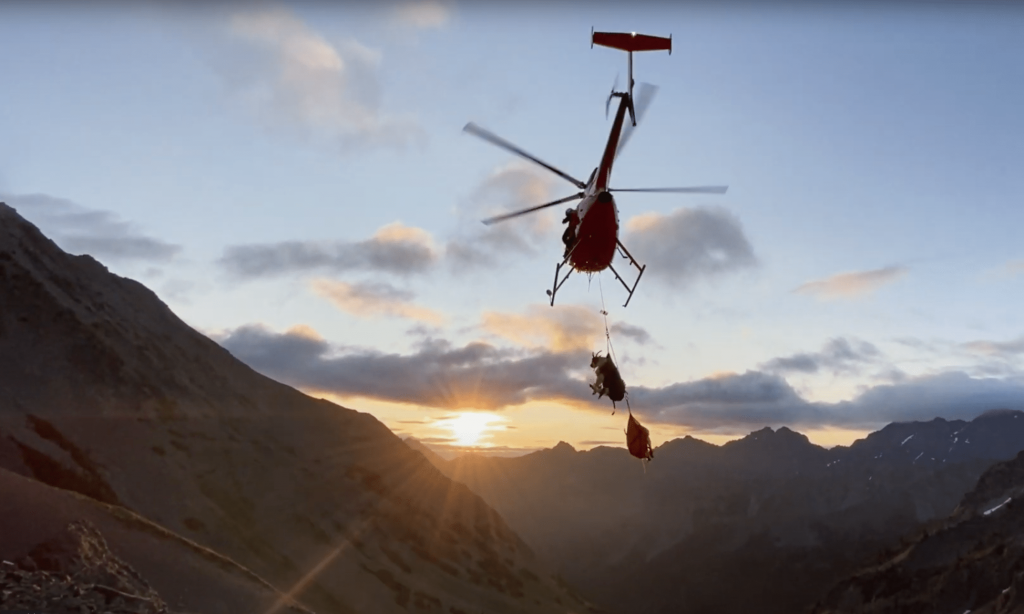
Ground Crews Cull 31 Mountain Goats In Olympic Nat’l Park
It wasn’t a regular hunt given the location and mission, but ground-based marksmen helped cull 31 more mountain goats from Olympic National Park this fall, part of a multiyear effort to eradicate the species in Washington’s rugged peninsula mountains.

Officials say that the 20 teams of three to six “highly skilled volunteers” each faced difficult conditions and poor weather – including thick smoke from late summer’s forest fires – but managed to take out goats in four different areas of the park, including 19 from the Chimney Peak-Mt. Anderson massif on the east side of the range.
Six other animals were removed from ONP’s southeast corner, four from Mt. Olympus at the center of the park and two from the nearby Bailey Range.

The ground cull followed aerial operations in August and previous years and brings the total to 412 goats taken out of the Olympics, with roughly three-quarters of those translocated to the North and Central Cascades to help rebuild herds there.
Mountain goats are native to the Northwest, but these animals were actually originally introduced to the OlyPen in the 1920s for hunting. After the park was created in 1938, that was no longer allowed. To change that would require a literal act of Congress, a tall order even if senators and representatives have been working across the aisle on fish and wildlife issues of late.
However, volunteer shooters have been used to reduce elk herds in two Colorado and South Dakota national parks, and that idea was included in ONP’s final environmental impact statement for getting as many of the estimated 725 goats off the Olympic Peninsula as possible. After undergoing extensive public review, it was approved. The cull is a first in Washington and the Northwest.
After park officials began recruiting hunters and others, more than 1,200 people applied to take part. Following evaluation as well as vetting by WDFW, the field was winnowed to 21 teams of 118 volunteers, with a few subsequently unable to participate. The 99 spotters, shooters and packers who took part underwent fitness, background and firearms tests.
The teams were assigned specific culling areas and time periods to do their job using nontoxic bullets.

According to ONP, 10 goats were removed during the first removal session, Sept. 9-19, which also coincided with the incredibly smoky skies due to those conflagrations burning in Western Oregon, Northern California and Southwest Washington at the time.
The second round, Sept. 22-Oct. 2, saw 18 removed, while two were taken in the final round, Oct. 5-16.
Crews also dealt with “heavy rain, strong winds, snow, sleet, lightning, wasps, and persistent low clouds and fog,” the park service reported.
All totaled, they volunteered more than 9,000 hours of their own time.
Participants were required to abide by ONP’s social media code, which includes a stipulation that pictures of “sensitive topics (e.g., animals …) … shall not be posted to personal social media without approval of the Superintendent, Public Information Officer, or a designee.”
They are not barred from talking and stories will eventually surface, but in the meanwhile a supportive hiker posted that they had bumped into a cull team that had glassed the heights without a sighting.
According to ONP, next up are more aerial removals next July and September. The remaining goats are considered to be too difficult to capture and release alive. Capture mortalities have increased from 5.2 percent in 2018 to 9.1 percent, while the time it takes to find animals via helicopter has more than doubled, from .59 hour to 1.31, park officials say.

ONP has long worried about the “exotic” goats’ impact on alpine vegetation as they search for salt and mineral licks. The animals are also attracted to places along trails where hikers pee for the salts that accumulate, as well as campsites where they dump dishwater. And in 2010, a man was gored and killed by a billy on Klahhane Ridge near Hurricane above Port Angeles, adding impetus to doing something about the population.
